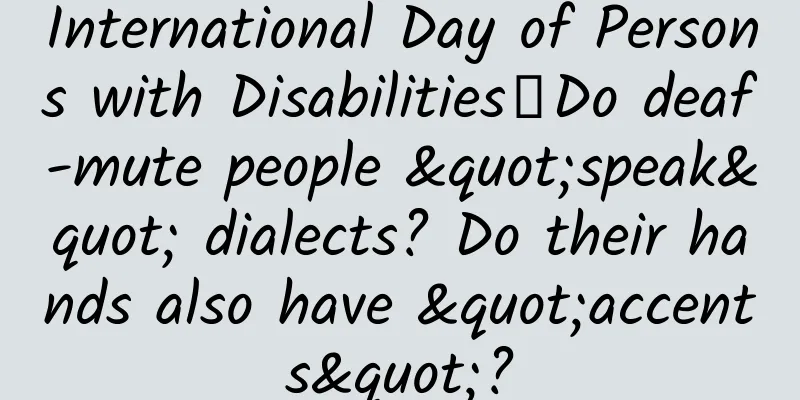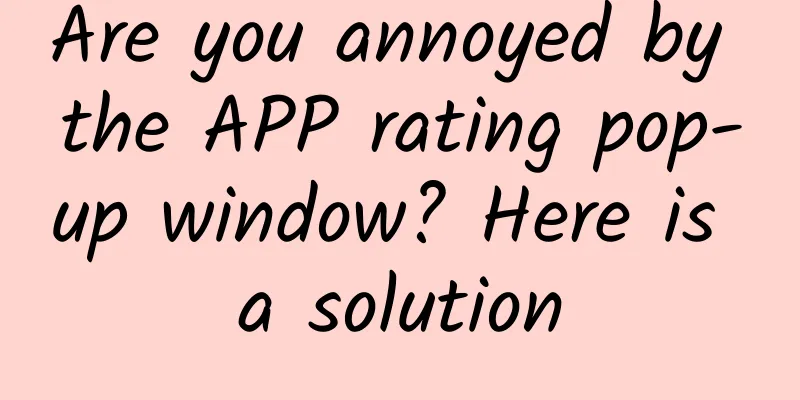International Day of Persons with Disabilities丨Do deaf-mute people "speak" dialects? Do their hands also have "accents"?

|
December 3 is the International Day of Persons with Disabilities. As the World Health Organization said, "disability is part of the human condition." Perhaps you still remember the story of Tang Shuai, CCTV's 2018 Rule of Law Person of the Year. Tang Shuai is the only sign language lawyer in the country. Because he is proficient in sign language and law, Tang Shuai not only represents many deaf-mute people in legal affairs, but also organizes sign language legal education activities and shoots sign language legal education videos. It was also in the reports about him that many people first learned that sign language also has dialects . CCTV 2018 Rule of Law Person of the Year Tang Shuai, Image source: CCTV.com Tang Shuai said in the report: "In terms of scope of application, the scope of application of Mandarin sign language is relatively narrow , such as news translation, school teaching, or conference translation; and in daily life, more than 90% of deaf-mute people use dialect sign language ." It would be particularly difficult to rely on sign language interpreters who use Mandarin sign language to communicate with deaf-mute people who use dialect sign language. Isn't sign language taught uniformly by teachers in schools for the deaf and mute? On the International Day of Persons with Disabilities, Science Popularization China invites everyone to clarify this issue. First, we need to understand the history of sign language. Even if the deaf have not received school education, they can still communicate with others using simple gestures. However, this sign language generally lacks complex vocabulary and has limited expressive ability. More than 400 years ago, the first group of educators for the deaf appeared in Europe. They were hearing people themselves (with sound hearing). When they opened schools for the deaf, they realized that they could compile a set of sign languages to help the deaf communicate and learn cultural knowledge. So people began to compile the first sign languages. Some of these sign languages come from the gestures that the deaf usually use , and some come from the language and cultural knowledge of educators . Because of different compilation methods and different cultural backgrounds, different sign language systems have been formed. Take China as an example. In the 19th century, foreign missionaries came to China to open the earliest schools for the deaf and dumb. Based on their existing experience in sign language teaching, they established early sign language teaching. After the founding of the People's Republic of China, educators did a lot of work on sign language, and published the "Sketch of Universal Sign Language for the Deaf and Dumb" in the 1950s. From 1979 to 1987, the "Sketch of Universal Sign Language for the Deaf and Dumb" was revised to "Universal Sign Language for the Deaf and Dumb Map", and in 1987 it was renamed "Chinese Sign Language". In 1990, "Chinese Sign Language" compiled by the Education and Employment Department of the China Disabled Persons' Federation and the China Deaf Association became the standard reference book for Chinese sign language. In May 2018, the "National Common Sign Language Vocabulary" was reviewed by the Standardization and Standard Approval Committee of the National Language and Script Working Committee, and was approved by the China Disabled Persons' Federation, the Ministry of Education, and the National Language and Script Working Committee. It was published as a language and script standard and implemented from July 1, 2018. These standard reference books and teaching materials have become the basis for sign language teaching in deaf and dumb schools in China today. A page from the "National Common Sign Language Vocabulary". Photo provided by the author In this way, all schools for the deaf and mute across the country should learn the same sign language, but the actual situation is not the case. Sign language, like spoken language, also has its own dialects , and the deaf and mute groups in each place have their own specific vocabulary. Some dialect vocabulary comes from different sign language traditions. For example, some local sign languages retain the traces of the sign language designed by missionaries in the past, using the posture of holding the Bible in the arm to indicate worship, and using numbers to indicate the day of the week; some sign language vocabulary has the characteristics of the times. For example, when expressing Japan, there is a gesture to indicate a sanitary beard (a shape that only leaves a beard above the lips and below the nose). There are also many words and expressions that are commonly agreed upon by the deaf groups in a region in communication, and have strong regional characteristics . Moreover, although sign language sounds like the language of hands, it actually involves more than just hand movements, but also certain facial expressions and body movements , and many words are expressed with subtle movements. The sign language used by the deaf-mute community is often very different from the standard sign language, and people refer to this kind of sign language as natural sign language ; the standard sign language developed by hearing people can also be called grammatical sign language . In his report, lawyer Tang Shuai used Mandarin and Minnan dialect as examples to illustrate the huge difference between standard sign language and natural sign language. Many hearing people learn standard sign language (grammatical sign language), which makes it difficult for them to communicate with the deaf-mute community. When I was a graduate student, I met teachers at the Beijing School for the Deaf. Hearing teachers pointed out that some deaf teachers’ sign language was mixed with “non-standard” sign language. Conversely, many deaf-mute people can use natural sign language fluently, but they are not necessarily familiar with standard sign language. On the Internet, some deaf-mute people said that they actually couldn’t understand the standard sign language in news programs . Today, deaf-mute people are able to use videos to share sign language information, and they also found in their communication that the differences in sign language in different places are very huge . Does that mean that the local sign language dialects are fragmented and "bad" sign languages? In the past, some deaf educators did think so, and they were committed to popularizing standard sign languages, especially those that were developed with reference to common languages. However, after research, linguists discovered a world of sign languages that hearing people did not understand. First of all, there is no corresponding relationship between the sign language of a region and the local common spoken language . For example, in Taiwan Province of China, people usually speak Chinese, but due to historical reasons, the sign language of the deaf has different dialect systems. Some regional dialects are influenced by Japanese Sign Language, while others are based on Chinese Sign Language. There are more than 140 standard sign languages in the world, and their use areas are not necessarily related to the common language of the place where they are located. For example, in Spanish-speaking South American countries, the language used by the deaf varies from country to country. Some are based on American Sign Language, while others are based on French Sign Language. Moreover, sign language is not a simplified version of spoken language, but a complete language . Sign language is not a man-made language based on spoken language, but has a complete set of grammar and vocabulary systems, which are as complex as spoken language. The coordination of gestures, expressions, and the time sequence of different actions can all express specific meanings. Regarding this issue, linguists have another interesting discovery, which is Nicaraguan Sign Language. Nicaragua introduced sign language education very late. It was not until 1977 that the first school for the deaf was established. At the beginning, teachers here focused on teaching children lip reading, which is to understand the meaning of hearing people's speech based on lip movements , and the communication method of using fingers to gesture letters . These teaching methods are inefficient and children cannot master them. However, because there are hundreds of deaf and mute children living together, they also learned simple American Sign Language, combined with their own family sign language, and soon they began to form a set of common sign language, which was passed on among several generations of students, becoming more and more complex, and gradually formed a complete set of sign language. Children using Nicaraguan Sign Language. Image source: Signwriting.org Their teachers not only did not participate in the compilation of this sign language, but they did not even realize that the students were signing at first. They thought that the students were communicating with gestures, but they could not understand what they were doing. In 1986, local teachers asked linguists for help. After in-depth investigation, professional linguists found that the deaf and mute students had developed a set of Nicaraguan sign language. This sign language was also passed on to the new students through older students. Educators took advantage of the situation and compiled teaching materials for this sign language and published a corresponding Spanish dictionary. It can be seen that the human brain has the instinct to learn language. As long as the environment is suitable, even without oral input, the deaf-mute group can spontaneously form language and dialects . This research is of great significance to our understanding of human language and brain. Of course, this does not mean that the deaf-mute community should not learn standard sign language. In fact, in the past, educators who compiled sign language were usually hearing people, and standard sign language was usually based on spoken grammar, and many movements were based on the pronunciation of common language. Deaf-mute people often find it difficult to learn this sign language. As people's understanding of sign language continues to deepen, the compiled standard sign language is more scientific. Today's Chinese Sign Language has eliminated a large number of words based on Chinese pronunciation, and more opinions from the deaf-mute were referred to during the compilation process, making it more convenient for the deaf-mute to learn. Not only that, people also realize that the deaf also have their own culture. Deaf schools and deaf communities in various places allow deaf people to get together and form their own identity and culture. Anna Landes, an educator and American Sign Language interpreter, believes that " whether a person belongs to the sign language deaf community is not determined by the degree of hearing loss, but by recognition and corresponding actions ." Article 30 of the fourth paragraph of the United Nations Convention on the Rights of Persons with Disabilities also stipulates: "People with disabilities have the right to recognize and support their specific cultural and linguistic identities, including sign language and deaf culture, on an equal basis with others." Deaf people who use sign language need to interact with hearing people every day. In order to protect their interests and improve everyone's living standards, we need a more scientific and standard sign language that is more in line with the habits of the deaf. We also need each of us to learn some new knowledge about sign language and have more respect and understanding for sign language and deaf culture . Note: There are many different names for people who use sign language, such as the deaf-mutes, deaf people, sign language users, and hearing-impaired people. The corresponding groups are somewhat different. This article consulted deaf social workers and focused on the topic of sign language. In order to facilitate the understanding of ordinary readers, the commonly used name of deaf-mutes was selected, and the hearing-impaired group was called hearing people. References: [1] Does sign language have dialects? He is the only sign language lawyer in the country and understands the feeling of “having no way to express pain” [EB/OL]. Beijing News. 2019-04-24. https://news.sina.cn/sh/2019-04-29/detail-ihvhiqax5619502.d.html?vt=4 [2] Gao Yuxiang, Gu Dingqian. A review of the development history of Chinese sign language[J]. Contemporary Linguistics, 2013, 15(1): 94-100. [3] Language creation and language change: Creolization, diachrony, and development[M]. Bradford Books, 1999. 179–237. [4] Mindess A. Reading between the signs: Intercultural communication for sign language interpreters[M]. Nicholas Brealey, 2006. [5] Common vocabulary list of national general sign language: GF 0020—2018 [S/OL]. Beijing: China Standards Press, 2018-03-19. http://www.moe.gov.cn/jyb_sjzl/ziliao/A19/201807/W020180725666828831381.pdf Author: Chen Chao, Master of Cognitive Neuroscience, Beijing Normal University Reviewer: Tao Ning, Associate Researcher, Institute of Biophysics, Chinese Academy of Sciences The cover image and the images in this article are from the copyright library Reproduction of image content is not authorized |
>>: Golden Retriever brought back a "silly roe deer" from the mountains. Are roe deer really stupid?
Recommend
Kuaishou short video operation strategy in 2022
1. Current Development Status of Kuaishou As for ...
How much does it cost to be an agent for Puyang women's clothing mini program?
How much does it cost to be an agent of Puyang Wo...
What do you think of the suddenly disappearing stars and twinkling stars?
A strange star flickering in the center of the Mi...
Xu Yuan 2022-02-13 Reasons and outlook for the 2022 stock market correction
Xu Yuan 2022-02-13 Reasons for the 2022 stock mar...
Home appliance giants are focusing on smart home: seizing a market worth hundreds of billions
Apple (647.35, 2.53, 0.39%), a giant in today'...
It costs tens of thousands of yuan to "start up" the machine once. What are the advantages of surgical robots?
Review expert: Shi Yunlei, PhD, Department of Inf...
7 key points to explain the strategy of recalling lost users
This article introduces the value of recalling lo...
Tesla confirmed to be fined $140,000. Pure electric car manufacturers also exceed pollution emission standards?
Pure electric vehicles do stop exhaust emissions ...
【Creative Cultivation Program】Why do hard drives need to be partitioned?
Author: Zhou Lei Reviewer: Chen Xudong I believe ...
Advertising material direction and landing page guide for the real estate industry!
The golden September and silver October real esta...
Microsoft's Chinese-style fight against piracy
"Microsoft just squeezed 60,000 yuan from ou...
How does user operation build user tags?
Building user tags is actually a very simple task...
Your farts contain information about your health!
Farting is generally a good thing, as the accumul...
Nanny mini program development function, how much does it cost to make a nanny housekeeping service WeChat mini program?
Nowadays, due to the ever-faster pace of life, pe...
Social media operation: How to use social media to increase followers accurately?
Community economy has become a trend. Whoever has...









